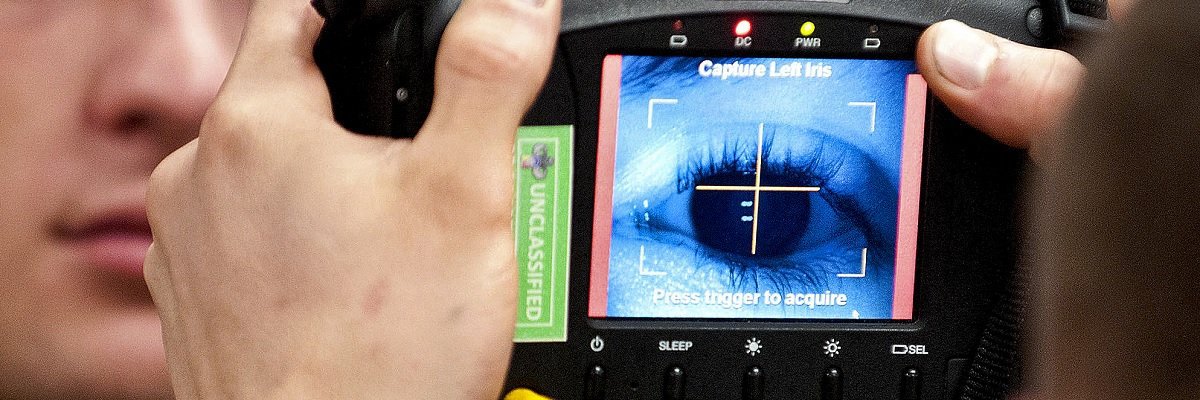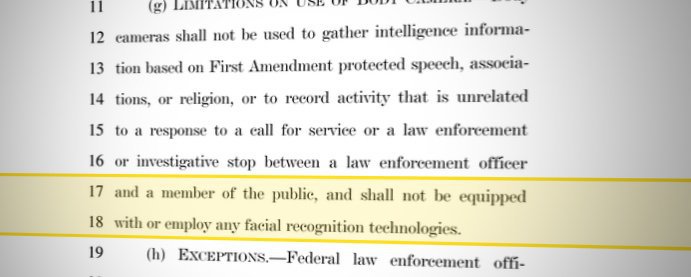This spring, private biometric intelligence company BI2 Technologies entered into an agreement with a law enforcement faction known as the Southwestern Border Sheriff’s Coalition. The partnership promised that BI2 would donate and integrate biometric identification devices and systems into sheriff departments along the US and Mexico border.
Started in 2005 in Plymouth, Massachusetts, BI2 has been slowly expanding their reach into police departments across the nation. Over the past twelve years, the company has crafted biometric registries and tools to innovate the way in which police can track, arrest, and control individuals. Their Inmate Recognition Identification System, or IRIS, is a registry that allows law enforcement to enter and identify suspects, offenders, and inmates using biometric recognition technology in seconds. BI2 has been publicly endorsed by the National Sheriff’s Association.
The SBSC voted unanimously in April to expand their biometric capabilities through a contract with BI2 Technologies. The agreement states that BI2 will provide an IRIS system for each participating SBSC Sheriff for a three-year trial run. This includes all the required hardware, cables, software, and services needed to operate an IRIS. After three years, the SBSC can decide whether or not to continue to use the IRIS technology at a fee.

Under the agreement, IRIS will be integrated into the current records management system of all SBSC jails. The device is set up in the mugshot area in order to restructure IRIS scanning into the booking process. The process begins when an individual’s eyes are captured by the iris camera, creating a high-resolution photograph of their iris. Iris recognition is vastly more accurate than fingerprints, with the ability to collect around 240 characteristics that make an individual’s eye unique - compared to the roughly 40 or 60 characteristics collected through prints. On average, it takes about 3.1 seconds for the technology to capture the distinctive features of a person’s iris.
Within seconds, the software can comb through local and national databases to confirm and return the identity of an individual. IRIS is linked to BI2’s online, real-time local and national iris biometric database accessible by all law enforcement. The registry contains photographs of the individual’s irises, their mugshot, a complete physical description, as well as the details and history of arrests, charges and offenses. If they already exist within the IRIS system, the average match time is 18.6 seconds.
The system can designate whether an individual is awaiting trial, has been sentenced and committed as well as include and track an unlimited number of alias names. When logging data into the system, staff members can also indicate whether an individual is a U.S. citizen or a candidate for a referral to ICE.

El Paso, a member of the SBSC was one of the first departments to become fully IRIS operational. In a request for biometric procurement documents, the department released a purchase order from BI2 for more IRIS scanning technology.

In addition to their three-year free trial, it appears that the department purchased two more IRIS cameras and mounting devices in June. In a matter of weeks, a free trial has already lead to an actual purchase.

It is no shock that private surveillance and technology companies have a penetrating interest in marketing their products to law enforcement. Just this year TASER International, now rebranded as Axon, had a “Camera for every officer” promotion where they offered to provide police with a free-one year body camera trial. With body cameras functionality expanding to include facial recognition software, what was originally marketed as an instrument for police accountability police has morphed into another means to surveil.
The IRIS handbook states that, “All of the iris images captured and used by I.R.I.S. are open, standards-based and have been certified to meet the FBI’s Next Generation Identification (NGI) standards.” The NGI program to expand the existing fingerprint database to include iris biometrics has received criticism for its unbridled, mass collection of citizen data. This includes the collection of biometric information collected in non-criminal contexts such as criminal inquiries and lawful detentions that do not result in an arrest.
A criminal justice biometric database housed by a private, outside vendors runs the very high risk of that information being misused and compromised. There are already privacy risks associated with a federal agency collecting iris data, let alone a private entity with less regulation. After a security breach, you can change your address but you can’t change your iris. Manufacturers like BI2 are increasingly motivated to appeal to law enforcement’s obsession with mass surveillance equipment - offering a free test of their product opens the door for private firms to shape the way in which police collect, use, store, and disseminate information.
You can read the IRIS manual embedded below, and the rest on the request page.
Image by Sgt. Michael J. MacLeod via Wikimedia Commons



